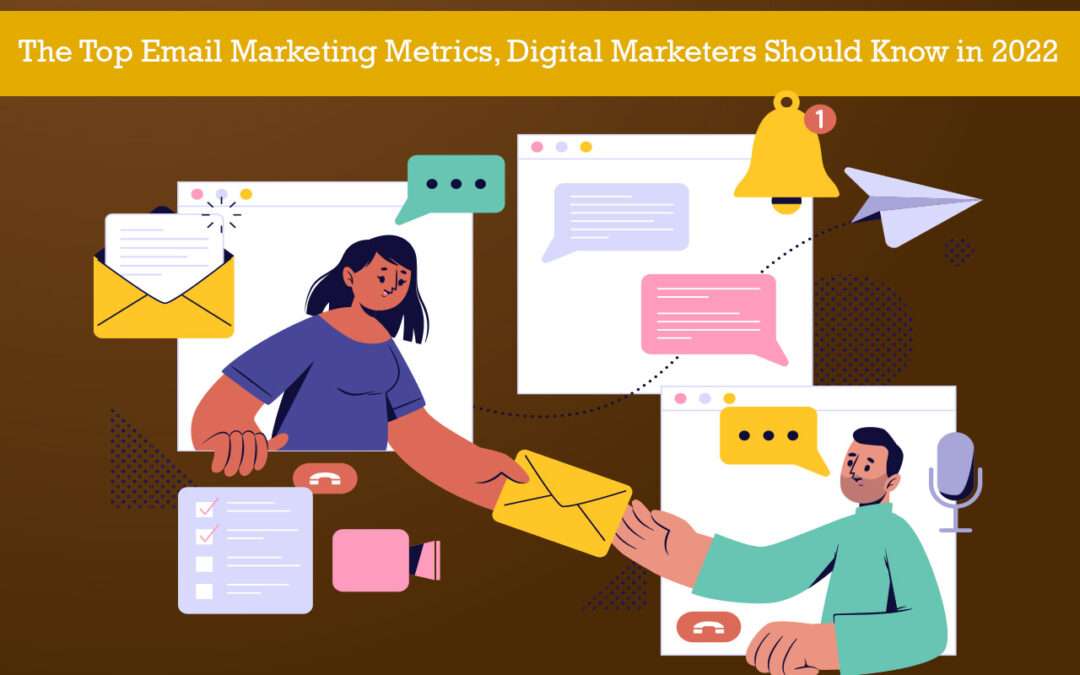The Top Email Marketing Metrics, Digital Marketers Should Know in 2022
Email marketing is a crucial string of digital marketing. The most important thing to note for working in the digital sector is recognizing that you will have to keep up with the seemingly endless stream of new tools and platforms that are introduced on a daily basis.
But when does this level of creativity become a hindrance to efficiency? What good is it to be enthralled by a new social media platform if it doesn’t help you reach your objectives?
In order to know the value of technology, it’s sometimes better to strike a balance between innovation and solid dependability.
It is very evident that an optimized email marketing strategy has the potential to be all-powerful, generating higher levels of engagement and better returns on investment.
An email has been a consistent and ubiquitous mode of communication since the early 1990s, with over 100 billion emails delivered each day.
Here are a few Email marketing metrics you should know in 2022:
- Clickthrough Rate
- Conversion Rate
- Bounce Rate
- Engagement
- Open Rate
1. Clickthrough Rate
You might be asking why the open rate isn’t the first measure listed in this guide; after all, isn’t it synonymous with email marketing? Perhaps, but consider this: would you rather assess the effectiveness of a promoted Facebook post by the number of likes it received, or by the number of people who clicked through to your website?
If you’re split-testing subject lines or comparing the performance of your newsletter on a weekly basis, open rates can be useful, but if you really want to know how recipients are interacting and engaging with each email you send, and whether or not they’re converting, click-through is the metric for you.
2. Conversion
After an email recipient clicks through to your website, the next goal is usually to persuade them to convert on your offer which ultimately means conversion. In other words, it means taking the action that your email requested. So, if you’re sending an email to your list offering them the chance to download a free eBook, you’d count anyone who actually does so as a conversion.
Conversion rate is a significant part of digital marketing and email marketing. It is essential to note that your conversion is directly related to the call-to-action in your email.

3. Bounce Rate
“Hard” and “soft” bounces are the two types of bounces to keep track of.
If in case an email address is invalid or non-existent then the email you send will not be delivered. In that situation, a hard bounce occurs.
It actually bounces rates are one of the primary characteristics used by internet service providers (ISPs) to determine an email sender’s reputation, you should remove hard bounce addresses from your email list in order to perform the right email marketing.
4. Engagement
Engagement is an essential factor in all aspects of digital marketing. It is simple that if there is no engagement then your strategy or digital marketing process is lacking something. In other words, the level of insight you can obtain from analysing how subscribers interact with your emails is far more detailed and significant than whether or not they opened it at all.
If a recipient responds to your email, you may rest assured that you are on your way to meeting your email marketing objectives. Knowing the depth of that interaction and how near you are to email marketing eminence can lead to full-fledged arrogance. The statistic of email interaction can be split down and analysed in two ways: Engagement based on the passage of time and the other factor is day.
5. Open Rate
Now coming to what is the open rate and how is it helpful in email marketing. The proportion of email recipients who open a particular message is known as the open rate.
The majority of email marketers are still bending over backward to improve their subject lines in order to increase open rates. While this can be beneficial — and more openings are always a good thing — companies should instead focus on improving their clickthrough rates.
The truth is that the open rate can also be a highly misleading indicator in digital marketing for a variety of reasons. Above all, an email is only considered “opened” if the recipient also receives the photos attached to it. Additionally, a big number of your email subscribers’ email clients are likely to have image-blocking turned on. This implies they won’t be counted in your open rate even if they open the email.
Conclusion
The most important part of any digital marketing activity is to set your goals. It is important to answer certain questions like:
What do you hope to accomplish with your email marketing campaign? How engaged are your subscribers? What is the significance of organic traffic and how to boost conversions? How do you make money? It is essential to note that whatever your goal, email marketing can help you achieve it.
More than 50% of internet users have made an online purchase as a direct result of email marketing, compared to 25% who purchased because of social media.
Because email marketing allows you to adapt your communications to the interests of a subscriber list that has previously opted-in to receive them, this is the case.
Unlike other digital media, your audience is (slightly) involved from the start, and you may obtain direct visibility in their inboxes and establish your value in digital marketing.

